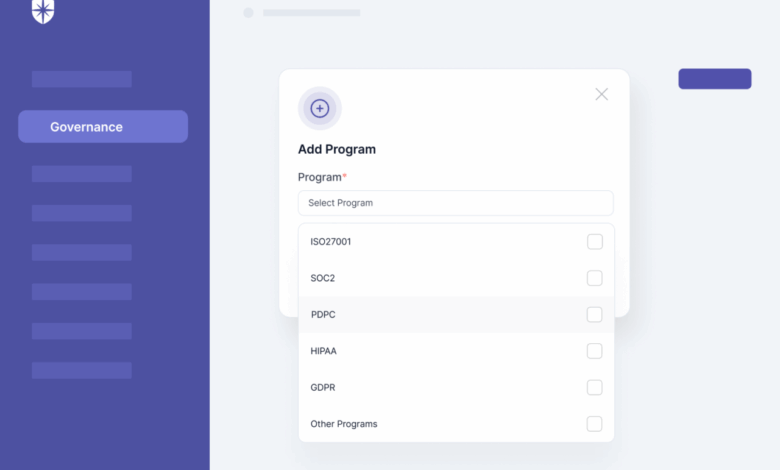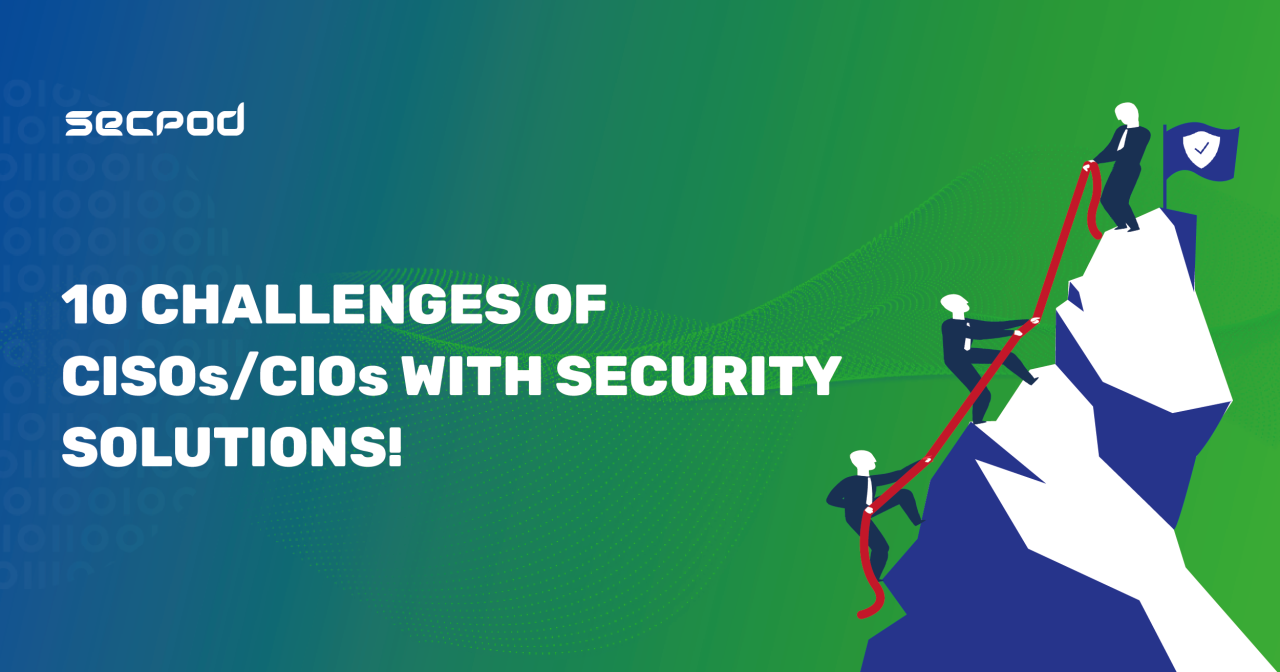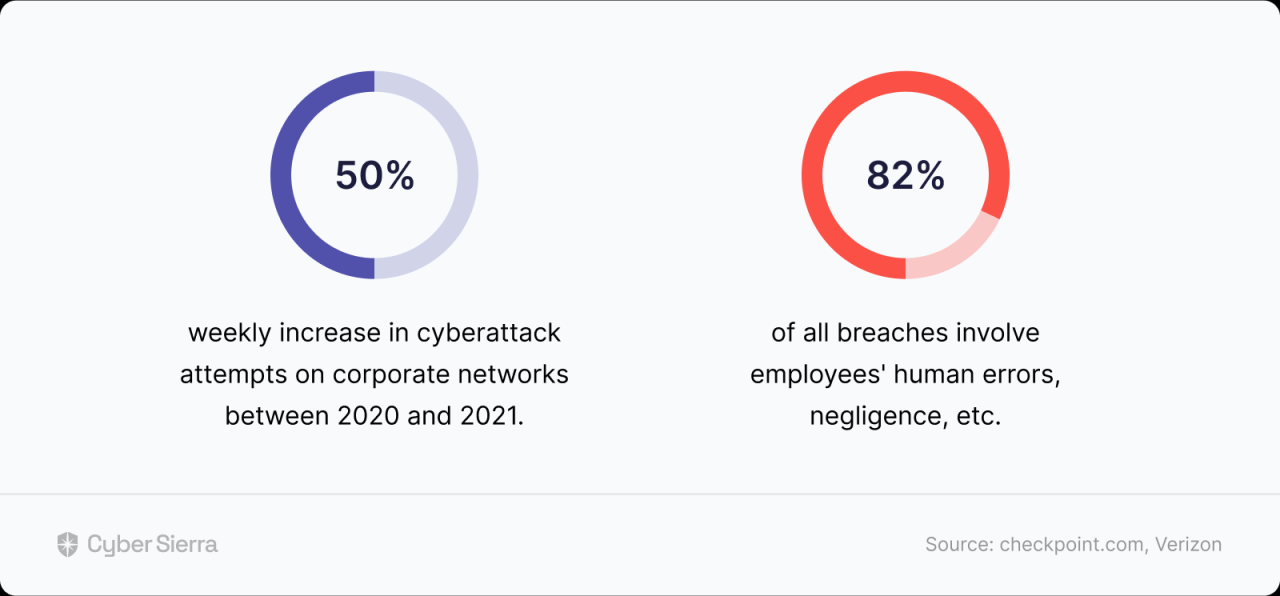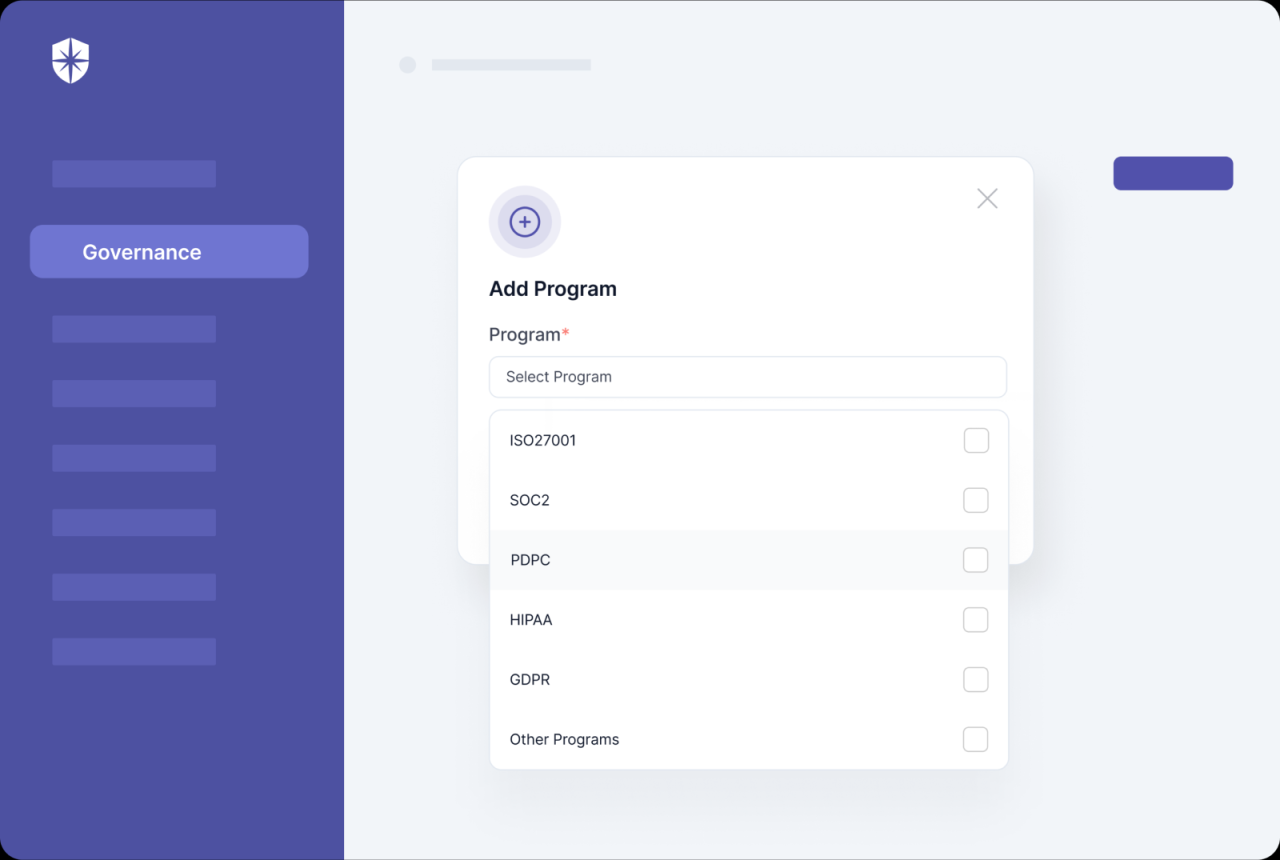
Five Data Security Challenges CISOs Face Today
Five data security challenges CISOs face today are more complex than ever. From the relentless rise of ransomware and increasingly sophisticated phishing attacks, to the unique vulnerabilities presented by cloud computing and the expanding attack surface of a distributed workforce, today’s Chief Information Security Officers (CISOs) navigate a minefield of threats. This post delves into five critical challenges, exploring the evolving tactics, mitigation strategies, and the overall impact on organizations.
We’ll unpack the intricacies of each challenge, offering insights into how CISOs can proactively address these threats and safeguard their organizations’ valuable data. We’ll look at practical solutions, best practices, and real-world examples to paint a clear picture of the current security landscape and equip you with the knowledge to navigate these complexities.
The Rise of Ransomware and Extortion Attacks
The threat landscape is constantly evolving, and ransomware attacks are no longer just about encrypting files; they’ve become sophisticated extortion schemes, targeting critical infrastructure and demanding exorbitant sums. The rise in ransomware attacks is fueled by the increasing profitability of this cybercrime, coupled with the relative ease of deploying attacks and the difficulty in tracking down perpetrators. This makes it a persistent and growing challenge for CISOs worldwide.Modern ransomware attacks employ a multi-pronged approach.
Initial access is often gained through phishing emails, exploiting software vulnerabilities, or leveraging compromised credentials. Once inside the network, attackers move laterally, mapping the system and identifying high-value targets before deploying the ransomware. Double extortion tactics are increasingly common, where attackers steal data before encrypting it, threatening to release sensitive information publicly unless a ransom is paid.
This dual threat significantly increases the pressure on victims to comply. Some advanced ransomware gangs even offer “data leak sites” where stolen data is published, adding further reputational damage to the financial loss.
Evolving Tactics in Modern Ransomware Attacks
Ransomware operators are constantly refining their techniques to evade detection and maximize their impact. This includes the use of self-propagating ransomware that spreads rapidly throughout a network, the adoption of advanced evasion techniques to bypass security solutions, and the use of encryption algorithms that are resistant to decryption. The shift towards double extortion adds another layer of complexity, as organizations face the difficult choice between paying a ransom and suffering significant reputational harm from data breaches.
Furthermore, the use of ransomware-as-a-service (RaaS) platforms makes it easier for less technically skilled individuals to launch attacks, broadening the threat landscape.
Successful Ransomware Mitigation Strategies
A robust defense against ransomware requires a multi-layered approach. Regularly backing up critical data to offline, immutable storage is paramount. This ensures that even if systems are encrypted, businesses can recover their data without paying a ransom. Implementing multi-factor authentication (MFA) across all systems and accounts significantly reduces the risk of credential compromise, a common entry point for ransomware attacks.
Furthermore, comprehensive security awareness training for employees is crucial to mitigate the risk of phishing attacks. Regular security assessments and penetration testing can identify vulnerabilities that attackers might exploit. Finally, maintaining up-to-date security software and patching systems promptly is essential to prevent exploitation of known vulnerabilities.
Financial and Reputational Impact of Ransomware Incidents
The financial impact of a ransomware attack can be devastating. Beyond the ransom payment itself (which can run into millions of dollars), organizations face costs associated with recovery, including downtime, lost productivity, legal fees, and the cost of incident response services. The reputational damage can be equally significant, leading to loss of customer trust, damage to brand image, and potential regulatory penalties.
For example, the 2021 Colonial Pipeline attack resulted in widespread fuel shortages and cost the company millions of dollars in recovery costs and ransom payments. The reputational damage extended far beyond the company itself, impacting consumer confidence and the broader energy sector.
Comparison of Ransomware Protection Methods
| Protection Method | Cost | Effectiveness | Implementation Complexity |
|---|---|---|---|
| Regular Backups (Offline, Immutable) | Moderate to High (depending on storage solution) | High | Moderate |
| Multi-Factor Authentication (MFA) | Low to Moderate | High (reduces credential compromise) | Low |
| Security Awareness Training | Low to Moderate | High (reduces phishing susceptibility) | Low to Moderate |
| Advanced Endpoint Detection and Response (EDR) | High | High (detects and responds to malicious activity) | Moderate to High |
The Expanding Threat Landscape of Insider Threats

Insider threats represent a significant and often overlooked danger to organizational security. Unlike external attacks, these threats originate from within the organization, leveraging existing access and trust to inflict damage. The consequences can be devastating, leading to data breaches, financial losses, reputational damage, and legal repercussions. Understanding the various types of insider threats and implementing robust preventative measures is crucial for minimizing this risk.Insider threats manifest in several ways, broadly categorized as malicious, negligent, or compromised.
Malicious insiders intentionally cause harm, often driven by personal grievances, financial gain, or ideological motivations. They might steal data, sabotage systems, or plant malware. Negligent insiders, on the other hand, unintentionally expose sensitive information or compromise security through carelessness or a lack of awareness. This could involve leaving a laptop unattended, using weak passwords, or failing to follow security protocols.
Finally, compromised insiders are individuals whose accounts or devices have been hijacked by external actors, allowing attackers to gain unauthorized access to organizational resources. This often happens through phishing attacks or malware infections targeting employees.
Types of Insider Threats
Malicious insiders actively seek to damage the organization. This could range from a disgruntled employee deleting critical files to a senior manager selling confidential information to a competitor. Negligent insiders, though not intentionally malicious, pose a substantial risk through their actions or inaction. For instance, an employee leaving a company laptop containing sensitive data in a public space demonstrates negligence.
Compromised insiders represent a hybrid threat where an employee’s credentials are stolen, allowing an external attacker to operate within the organization’s network undetected. This often leverages phishing or social engineering techniques to gain access.
Indicators of Insider Threats
Identifying insider threats requires vigilant monitoring and analysis of various indicators. Unusual access patterns, such as accessing sensitive data outside of normal working hours or from unusual locations, should raise suspicion. A sudden increase in data downloads or copying of large files could also indicate malicious activity. Furthermore, attempts to bypass security controls or disable monitoring systems warrant immediate investigation.
Changes to system configurations or the creation of unauthorized accounts are further red flags. Finally, monitoring employee behavior, including unusual communication patterns or changes in productivity, can provide valuable insights. The key is to establish baselines of normal activity and proactively identify deviations from those norms.
Preventative Measures to Minimize Insider Threats
Implementing a multi-layered approach to security is vital in mitigating insider threats. This involves robust access control measures, such as implementing the principle of least privilege, limiting access to sensitive data based on job roles, and regularly reviewing and updating user permissions. Strong authentication methods, including multi-factor authentication (MFA), should be mandatory for all users, particularly those with access to sensitive data.
Five data security challenges CISOs face today are huge, ranging from insider threats to sophisticated phishing attacks. One glaring example of the risks users face highlights the increasing importance of robust security measures; check out this article on facebook asking bank account info and card transactions of users to see how even established platforms can falter.
This incident underscores the constant need for CISOs to stay ahead of evolving threats and prioritize user data protection.
Regular security awareness training for all employees is crucial, emphasizing the importance of data security, password hygiene, and phishing awareness. Moreover, implementing data loss prevention (DLP) tools can help monitor and prevent sensitive data from leaving the organization’s control. Finally, regular security audits and penetration testing can identify vulnerabilities and weaknesses in the organization’s security posture.
Five data security challenges CISOs face today are huge, from insider threats to sophisticated phishing attacks. Managing the ever-expanding cloud landscape adds another layer of complexity, which is why understanding solutions like bitglass and the rise of cloud security posture management is crucial. These tools help address the growing need for better visibility and control, ultimately helping CISOs tackle those five major data security challenges more effectively.
Best Practices for Employee Onboarding and Offboarding Procedures
Effective onboarding and offboarding processes are critical for mitigating insider threats.
- Onboarding: Thorough background checks, comprehensive security awareness training covering company policies and procedures, clear delineation of roles and responsibilities, and immediate access restrictions until necessary permissions are granted.
- Offboarding: A structured process involving disabling accounts immediately upon resignation or termination, revoking access to all systems and data, recovering company-owned devices, conducting exit interviews to identify any potential risks, and performing a final security audit of the departing employee’s activities.
The Increasing Sophistication of Phishing and Social Engineering Attacks
Phishing and social engineering attacks are evolving at an alarming rate, becoming increasingly sophisticated and difficult to detect. Cybercriminals are leveraging advanced techniques to bypass traditional security measures and exploit human vulnerabilities, resulting in significant financial losses and data breaches for individuals and organizations alike. Understanding these techniques and implementing robust security awareness training are crucial for mitigating the risks.Sophisticated phishing and social engineering attacks rely on a combination of technical and psychological manipulation.
Attackers meticulously craft their messages to appear legitimate, often targeting specific individuals or organizations with personalized information gleaned from publicly available sources or previous data breaches. They leverage a range of tactics, from mimicking trusted brands and institutions to exploiting current events and social trends to gain the victim’s trust and elicit a desired action, such as clicking a malicious link, downloading a compromised file, or revealing sensitive credentials.
Types of Phishing Attacks
Different types of phishing attacks target victims with varying levels of personalization and sophistication. Spear phishing, for example, focuses on a specific individual or small group, utilizing highly targeted information to increase the likelihood of success. Whaling, on the other hand, aims for high-profile targets, such as CEOs or other executives, often involving extensive research and highly personalized attacks.
Generic phishing campaigns, while less personalized, still pose a significant threat due to their sheer volume and the potential for widespread impact. The success of these attacks hinges on exploiting human psychology and bypassing technical security controls.
Security Awareness Training’s Importance in Combating Social Engineering
Security awareness training plays a pivotal role in mitigating the risks associated with social engineering attacks. By educating employees about common phishing tactics, social engineering techniques, and best security practices, organizations can significantly reduce their vulnerability to these attacks. Effective training programs should cover topics such as identifying suspicious emails, recognizing social engineering tactics, and understanding the importance of strong passwords and multi-factor authentication.
Five data security challenges keep CISOs up at night: ransomware, insider threats, cloud vulnerabilities, supply chain attacks, and zero-day exploits. Developing secure applications is crucial, and that’s where exploring new development approaches like those discussed in this insightful article on domino app dev the low code and pro code future becomes essential. Ultimately, mitigating these risks requires a multi-faceted strategy, including robust application security.
Regular training and simulated phishing exercises are crucial to reinforce learning and ensure employees remain vigilant against evolving threats. A well-trained workforce represents the strongest defense against these attacks.
Examples of Phishing Emails and Their Red Flags
The following table illustrates examples of phishing emails and their corresponding red flags. Recognizing these red flags is crucial in preventing successful phishing attacks.
| Phishing Email Example | Red Flag 1 | Red Flag 2 | Red Flag 3 |
|---|---|---|---|
| Email claiming to be from your bank, requesting you to update your account details via a link. | Generic greeting (e.g., “Dear Customer”) | Suspicious link (e.g., shortened URL, unusual domain name) | Urgent or threatening tone |
| Email from a supposed colleague asking for urgent financial assistance, with a compelling story. | Unusual request from a known contact | Grammar and spelling errors | Pressure to act quickly |
| Email offering a prize or lottery win, requiring personal information to claim it. | Unfamiliar sender | Promise of unrealistic rewards | Request for sensitive information (e.g., bank details, passwords) |
| Email with a subject line mimicking a legitimate notification, containing a malicious attachment. | Unexpected attachment | Suspicious file extension (e.g., .exe, .scr) | Lack of personalized information |
The Challenges of Protecting Cloud-Based Data and Applications

The migration of data and applications to the cloud offers numerous benefits, including scalability, cost-effectiveness, and accessibility. However, this shift also introduces a unique set of security challenges that CISOs must address proactively. Unlike on-premise infrastructure, where security is largely controlled within a single organization’s perimeter, cloud security involves shared responsibility, making it crucial to understand and manage the risks associated with both the cloud provider and the organization’s own configurations.
This necessitates a robust and multifaceted approach to security, encompassing various tools and strategies.The shared responsibility model is a cornerstone of cloud security. While cloud providers are responsible for the security
- of* the cloud (the underlying infrastructure), organizations remain responsible for security
- in* the cloud (data, applications, and configurations). This division necessitates a clear understanding of each party’s obligations and the implementation of appropriate security measures at both levels. Failure to properly address this shared responsibility can lead to significant vulnerabilities and security breaches.
Cloud Access Control Mechanisms
Effective access control is paramount in securing cloud environments. This involves implementing robust authentication and authorization mechanisms to restrict access to sensitive data and applications based on the principle of least privilege. Multi-factor authentication (MFA) should be mandatory for all users, particularly those with administrative privileges. Role-based access control (RBAC) allows for granular control over user permissions, ensuring that individuals only have access to the resources necessary for their roles.
Regular audits of user access rights are essential to identify and rectify any unauthorized access or overly permissive configurations. For example, an employee leaving the company should have their access revoked immediately, a process that should be automated to avoid human error.
Data Encryption Strategies in the Cloud
Data encryption is a critical component of cloud security, protecting sensitive information both in transit and at rest. Encryption in transit utilizes protocols like TLS/SSL to secure data transmitted over networks. Encryption at rest involves encrypting data stored on cloud storage services. Organizations should utilize strong encryption algorithms and key management systems to ensure the confidentiality and integrity of their data.
Furthermore, choosing a cloud provider with strong encryption capabilities and robust security certifications is crucial. For example, using AES-256 encryption for data at rest is a widely accepted best practice. Regular key rotation is also important to mitigate the impact of potential compromises.
Designing a Secure Cloud Architecture
A well-designed cloud architecture incorporates multiple layers of security to mitigate various threats. This involves implementing a combination of security tools and strategies, including firewalls, intrusion detection/prevention systems (IDS/IPS), vulnerability scanners, and security information and event management (SIEM) systems. Regular security assessments and penetration testing are essential to identify vulnerabilities and improve the overall security posture of the cloud environment.
Furthermore, leveraging cloud-native security features, such as cloud access security brokers (CASBs) and cloud workload protection platforms (CWPPs), can significantly enhance security. For instance, a layered approach might include a web application firewall (WAF) to protect web applications, an IDS/IPS to monitor network traffic for malicious activity, and a SIEM to collect and analyze security logs from various sources.
This layered approach ensures that even if one security control fails, others remain in place to protect the system.
The Difficulty of Managing and Protecting the Expanding Attack Surface

The modern enterprise faces a dramatically expanding attack surface, a consequence of digital transformation and the increasingly interconnected nature of business operations. This expansion presents significant challenges to security teams, demanding a more proactive and comprehensive approach to risk management than ever before. The sheer volume and diversity of potential entry points make traditional security perimeters increasingly irrelevant, requiring a shift towards a more holistic and adaptable security posture.The key components of this expanding attack surface are multifaceted and constantly evolving.
We’re not just talking about traditional endpoints like desktops and laptops anymore. The proliferation of Internet of Things (IoT) devices, from smart thermostats to industrial control systems, introduces countless new vulnerabilities. Simultaneously, the rise of remote work has exponentially increased the number of access points to corporate networks, often from unsecured home networks or public Wi-Fi hotspots. Cloud adoption, while offering significant benefits, also expands the attack surface, introducing new attack vectors and potential data breaches.
This complexity necessitates a fundamentally different approach to security, one that moves beyond simple perimeter defenses.
Managing and Securing an Increasingly Distributed Workforce
The shift to remote work has significantly broadened the attack surface, introducing new challenges for security teams. Securing a distributed workforce requires a robust and adaptable security strategy that accounts for the diverse environments in which employees now operate. This includes implementing strong authentication mechanisms, such as multi-factor authentication (MFA), for all remote access points. Regular security awareness training is crucial to educate employees about phishing attempts and other social engineering tactics.
Furthermore, organizations need to ensure that all remote devices are properly configured and protected with up-to-date antivirus and endpoint detection and response (EDR) software. The lack of a centralized physical security perimeter necessitates a reliance on strong remote access controls and continuous monitoring of network activity. For example, a company might utilize a Virtual Private Network (VPN) to encrypt all traffic between remote devices and the corporate network, thereby protecting sensitive data in transit.
The Importance of a Robust SIEM System, Five data security challenges cisos face today
A Security Information and Event Management (SIEM) system is crucial for managing and protecting an expanding attack surface. SIEM systems aggregate security logs from various sources across the organization, providing a centralized view of security events. This consolidated view allows security teams to detect and respond to threats more effectively, identifying patterns and anomalies that might indicate a breach.
By correlating data from diverse sources, SIEM systems can identify sophisticated attacks that might otherwise go unnoticed. Furthermore, a robust SIEM system enables proactive threat hunting, allowing security teams to actively search for and mitigate potential vulnerabilities before they are exploited. For instance, a SIEM might detect unusual login attempts from an unusual geographic location, triggering an alert and potentially preventing a successful breach.
Recommendations for Securing Remote Access
Implementing robust security measures for remote access is paramount in today’s distributed work environment. The following recommendations contribute to a layered security approach, mitigating risks associated with remote access to corporate networks and applications.
- Implement multi-factor authentication (MFA) for all remote access points. This adds an extra layer of security, making it significantly more difficult for attackers to gain unauthorized access.
- Utilize a Virtual Private Network (VPN) to encrypt all traffic between remote devices and the corporate network. This protects sensitive data in transit, preventing eavesdropping and data breaches.
- Enforce strong password policies and encourage the use of password managers. This reduces the risk of weak or easily guessed passwords.
- Regularly update and patch all software and operating systems on remote devices. This minimizes vulnerabilities that attackers could exploit.
- Deploy endpoint detection and response (EDR) solutions on all remote devices to monitor for malicious activity and provide real-time threat detection.
- Provide regular security awareness training to employees to educate them about phishing attempts and other social engineering tactics.
- Implement robust access control policies to limit access to sensitive data and applications based on the principle of least privilege.
Closing Summary: Five Data Security Challenges Cisos Face Today
In conclusion, the five data security challenges facing CISOs today demand a proactive and multi-faceted approach. Staying ahead of the curve requires a blend of robust technological solutions, comprehensive security awareness training, and a strong focus on risk management. By understanding these challenges and implementing the strategies discussed, organizations can significantly improve their cybersecurity posture and protect their valuable assets in this ever-evolving threat landscape.
It’s not just about reacting to threats, it’s about anticipating and preventing them.
Essential FAQs
What’s the difference between spear phishing and whaling?
Spear phishing targets specific individuals within an organization, while whaling targets high-profile executives or individuals with significant influence.
How can I improve my organization’s security awareness training?
Regular, engaging training that includes realistic simulations and real-world examples is crucial. Make it interactive and tailor it to different roles within the organization.
What are some low-cost ways to improve ransomware protection?
Regular backups, multi-factor authentication, and employee security awareness training are cost-effective starting points.
How can I identify a compromised employee?
Look for unusual login activity, access to sensitive data outside normal work hours, or changes in behavior. Regular security audits and monitoring can help.





